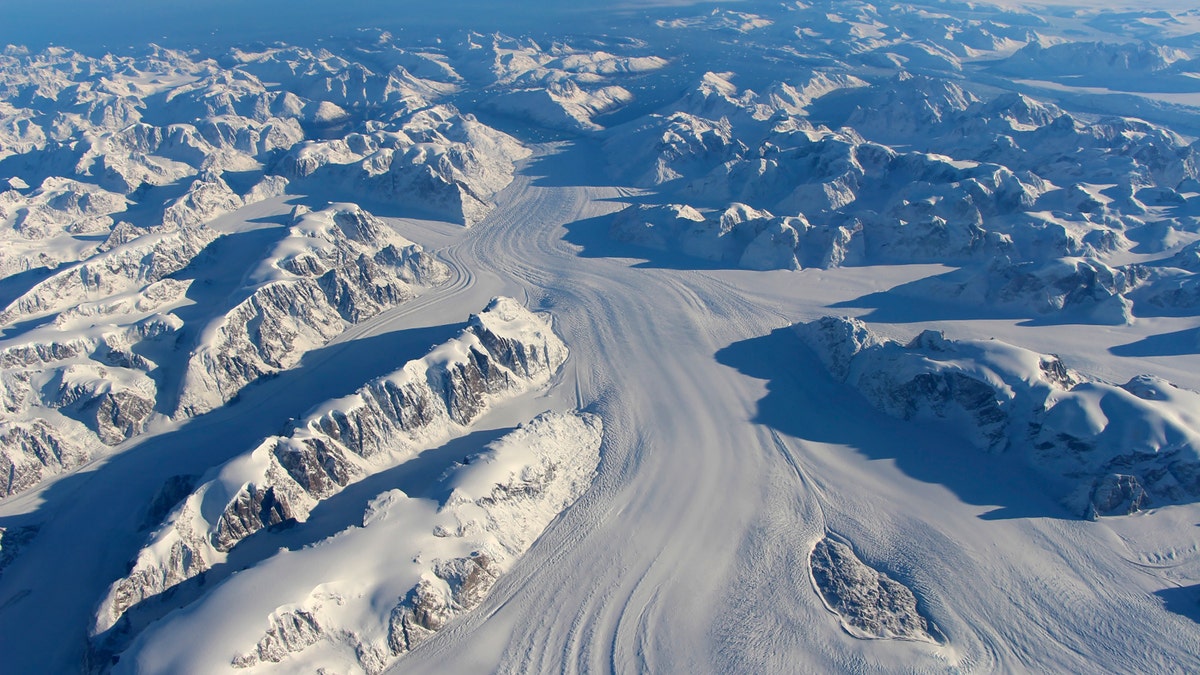
File photo - Heimdal Glacier in southern Greenland is seen in a NASA image captured by Langley Research Center's Falcon 20 aircraft Oct. 13, 2015 (REUTERS/NASA/John Sonntag/Handout via Reuters)
Climate change may not have played a role in Vikings’ 10th-century colonization of Greenland and abandonment of their colonies 400 years later, according to a new study.
The report published in the journal Science Advances challenges the long-held theory that Vikings settled on Greenland during warmer temperatures during the so-called Medieval Warm Period. Researchers analyzed chemical isotopes in boulders that were left by advancing glaciers over the last 1,000 years in Southwestern Greenland and nearby Baffin Island. Evidence points to a different story where Vikings settled a far colder, icier Greenland.
The findings reveal that the Medieval Warm Period, a balmy season that Europe experienced from 950-1250, was not felt elsewhere, including Greenland. Records show that Vikings first sailed from Iceland to Greenland in 985. They settled there in the 10th Century and anywhere from 3,000-5,000 settlers lived on Greenland, farming and harvesting walrus ivory.
Related: Stonehenge stones may have been first erected in another country
“It’s becoming clearer that the Medieval Warm Period was patchy, not global,” said lead author Nicolás Young, a glacial geologist at Columbia University’s Lamont-Doherty Earth Observatory, in a statement. “The concept is Eurocentric - that’s where the best-known observations were made. Elsewhere, the climate might not have been the same.”
The research not only challenges climate theories about the time when Greenland was settled by Vikings, it also calls into question long-held beliefs about the disappearance of the Viking settlers a handful of generations later. It was once believed that the colonies, which vanished sometime between 1360 and 1460, succumbed to a colder climate. The Vikings’ disappearance was thought to have followed the onset of the so-called Little Ice Age, which ran from about 1300-1850. Experts, however, have questioned this theory, noting the lack of early historical climate records from Greenland.
While the disappearance of the colonies remains a mystery, other theories now include hostility with the native Inuit, a decline in ivory trade and soil erosion caused by the Vikings’ cattle.
Related: Ancient 'wand' may be oldest example of lead work in the Levant
“I do not like the simplistic argument that the Greenland people went there when it was warm, and then ‘it got cold and they died’,” said Astrid Ogilvie, a climate historian based at Iceland’s Akureyri University, in the statement. “I think the Medieval Warm Period has been built on many false premises, but it still clings to the popular imagination.”
Europeans did not re-inhabit Greenland until the 1700s.
The rocks were analyzed at the University of Buffalo, and at the Lamont-Doherty lab of geochemist and study coauthor Joerg Schaefer. The analyses measured buildups of small amounts of Beryllium 10, an isotope created when cosmogenic rays strike rock surfaces newly exposed by melting ice, according to the statement.
In addition to Young and Schaefer, the paper was coauthored by Avriel Schweinsberg and Jason Briner of the University at Buffalo, who carried out the Greenland part of the fieldwork.




















